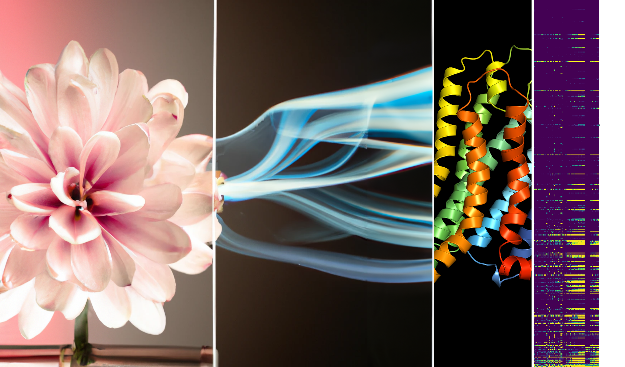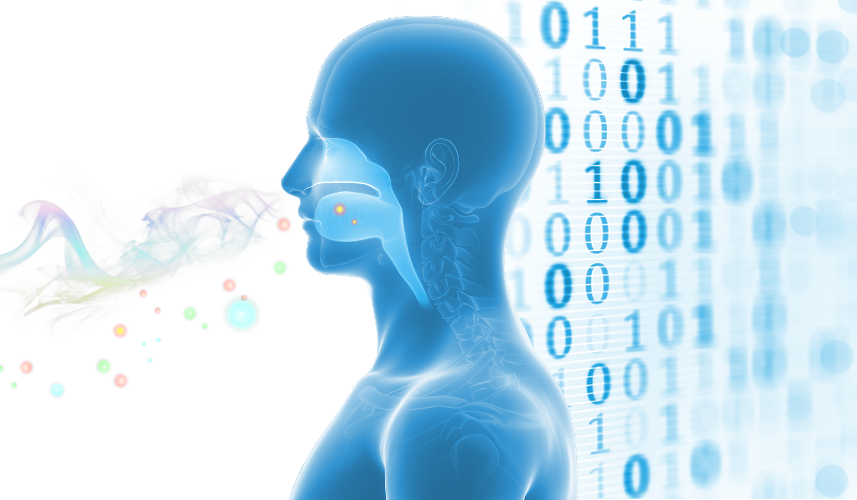Our brain is made up of billions of neurons and is considered the most complex organ in our body. Among our five senses, smell and taste are the two chemical senses that enable living beings to identify and react to substances in their environment. Our brain’s extraordinary ability to discriminate stems from the organization of our detection system. We have around 400 olfactory receptors and 30 gustatory receptors. Knowing that one molecule (odorous or sapid) can activate several sensory receptors, that one receptor can respond to several different molecules, and that the perception of an odor or flavor can come from a single molecule or a mixture of molecules, the combinatorial possibilities are virtually infinite (Fig. 1). The chemical space of molecules that can activate our sense of smell or taste is immense, and one of the aims of our work is to identify the chemo-genomic links in these high-dimensional spaces, and to develop molecular and numerical models capable of rationally predicting novel olfactory and taste compounds. Understanding how chemicals code for a certain type of percept is fundamental for basic research and for the food, flavor and fragrance industry. It would also be beneficial for the pharmacology industry and public health since scent detection in medical diagnosis by animals and electronic nose holds promise for the future.

Figure 1: The brain perceives an odorant compound through differential activation of the 400 human olfactory receptors. The same combinatorial code exists for bitter taste involving 25 human bitter taste receptors. (CNRS News : https://www.inc.cnrs.fr/fr/cnrsinfo/dechiffrer-le-langage-des-odeurs-grace-lia)
